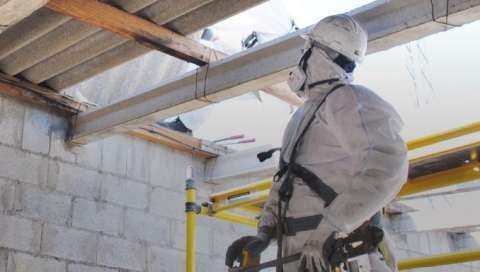Asbestos is a hazardous material that was commonly used in building products until the late 1980s. If you own an older home in Brisbane, it’s crucial to determine whether your roof contains asbestos. Removing an asbestos roof is a complex and risky task that requires careful planning and execution asbestos roof removal brisbane. This guide provides a step-by-step approach to safely remove asbestos roofing material.

Step 1: Identify Asbestos
Before removing an asbestos roof, it’s essential to confirm its presence. Asbestos roofs typically have a distinct appearance, such as:
- Grey or white corrugated sheets
- Fibrous texture
- Cracks or flaking paint
If you suspect your roof may contain asbestos, hire a licensed professional to conduct a thorough inspection and take samples for laboratory analysis.
Step 2: Hire a Licensed Asbestos Removalist
In Australia, asbestos removal must be performed by a licensed professional. When choosing an asbestos removalist, look for:
- Proper licensing and accreditation
- Experience with residential asbestos removal
- Positive reviews and testimonials
- Comprehensive insurance coverage
A licensed professional will ensure that all safety regulations are met during the removal process.
Step 3: Prepare for Removal
Once you have hired a licensed professional, they will prepare for the removal process by:
- Conducting a risk assessment to identify potential hazards
- Establishing a clear removal plan, including timelines and procedures
- Informing you and your neighbors about the work being conducted
As part of the preparation, ensure that any pets and children are kept away from the work area.
Step 4: Set Up the Work Area
Before the removal begins, the asbestos removalist will:
- Erect barriers and signage to restrict access to the work area
- Set up containment measures, such as tarps or plastic sheeting, to capture any asbestos fibers that may be released
- Ensure that proper ventilation is in place to minimize dust accumulation
Step 5: Remove the Asbestos Roof
During the removal process, the licensed professional will:
- Use specialized equipment to safely detach and remove the asbestos roofing materials
- Avoid using power tools that may generate dust and debris
- Wet the asbestos materials to minimize the release of fibers
It’s vital that this step is conducted carefully and according to safety regulations.
Step 6: Dispose of Asbestos Waste
Once the asbestos roof has been removed, the next step is to dispose of the materials properly. The licensed removalist will:
- Package the asbestos waste in approved, labeled containers
- Transport the waste to a licensed disposal facility
- Provide you with a waste disposal receipt for your records
It’s illegal to dispose of asbestos waste in regular landfills, so ensure that your removalist follows the correct procedures.
Step 7: Conduct a Post-Removal Inspection
After the removal is complete, a post-removal inspection is necessary to ensure that no asbestos fibers remain in the area. This may involve:
- Air monitoring to check for airborne asbestos fibers
- A visual inspection of the site for any remaining materials
- Professional cleaning of the work area
Your licensed asbestos removalist will handle this step and provide you with a report on the inspection results.
Step 8: Restore Your Roof
Once you’ve confirmed that the area is clear of asbestos, you can proceed with restoring your roof. Consider the following options:
- Installing a new roofing system that meets current building codes
- Applying for any necessary permits or approvals from your local council
Consult with a roofing professional to explore the best options for your home.
Conclusion
Removing an asbestos roof is a significant undertaking that requires expertise and strict adherence to safety regulations. As a Brisbane homeowner, it’s essential to prioritize your safety and that of your family by hiring a licensed asbestos removalist. By following this step-by-step guide, you can ensure a safe and efficient removal process, allowing you to enjoy your home without the risks associated with asbestos.
